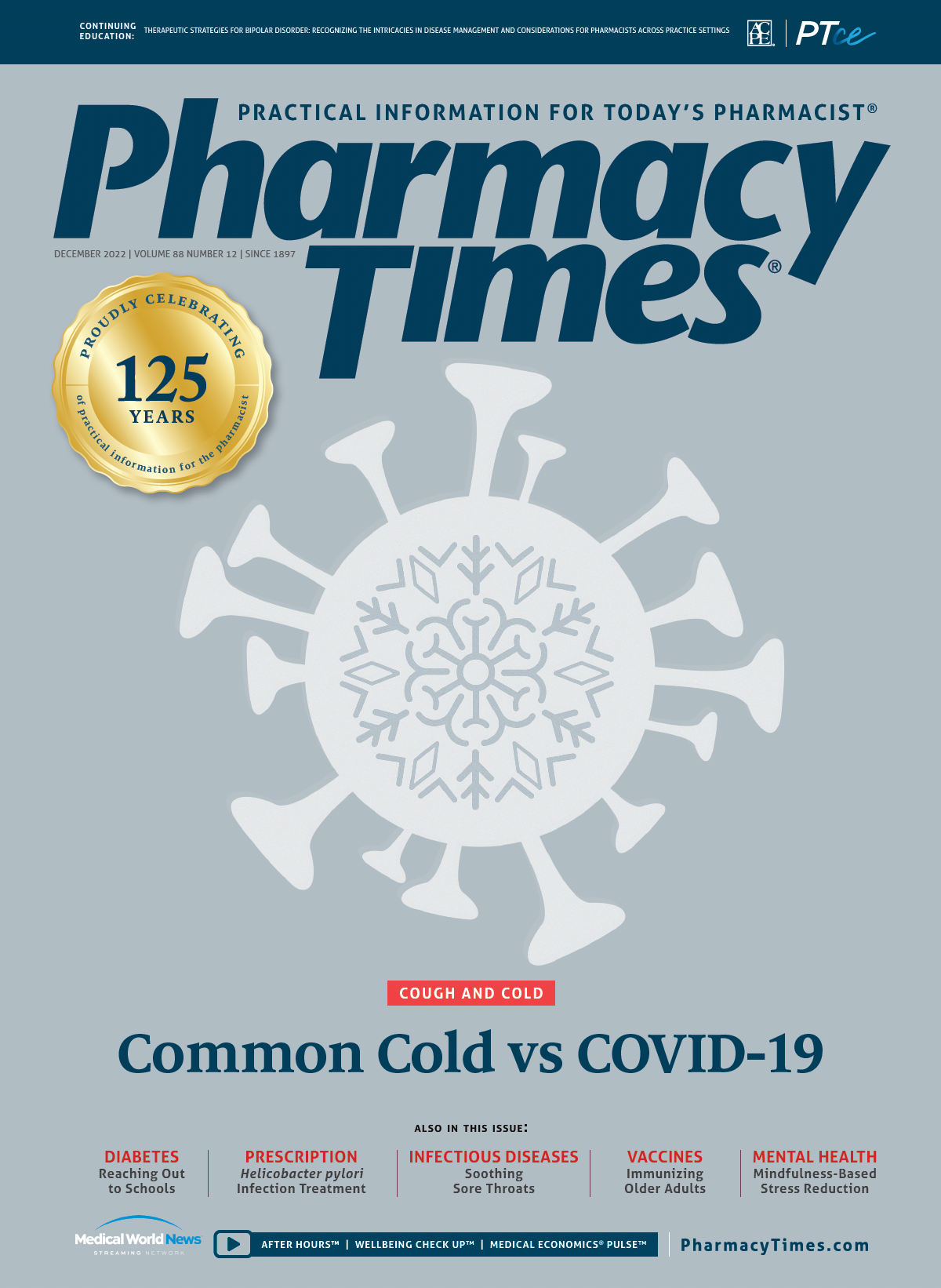Publication
Article
Pharmacy Times
December Interactive Case Studies
Cases address anticoagulants and medication administration.
Case 1
TD is a 64-year-old man who is visiting an anticoagulation clinic for routine international normalized ratio (INR) monitoring. He is receiving treatment for a pulmonary embolism with warfarin, which was started 6 months ago. TD’s INR goal is 2 to 3. At this office visit, his INR is 4.2. The pharmacist reviews TD’s chart and sees that he has a past medical history significant for alcoholism, benign prostate hyperplasia, and pulmonary embolism. He says he has been drinking about 1 pint of hard liquor daily and has been going through episodes of relapse over the past several months. When reviewing his previous laboratory reports, the pharmacist sees that his past INRs are supratherapeutic whenever he reports a night of binge drinking.
Question
Is warfarin the safest anticoagulant forthis patient?
Answer
Alcohol consumption can inhibit the metabolism of warfarin and thus increase the risk of bleeding.¹ A case-control study compared alcohol consumption in 265 patients receiving warfarin, and the risk of major bleeding was increased with moderate to severe alcohol use and with heavy episodic drinking.² Given TD’s state of alcoholism and assuming that he doesn’t have decompensated cirrhosis, a direct-acting oral anticoagulant such as apixaban may be safer because apixaban is associated with a lower overall risk of gastrointestinal bleeding than warfarin. Despite a more favorable safety profile, it should be noted that when given with alcohol, all anticoagulants can increase a patient’s risk of bleeding. As such, efforts should be made to assist and counsel TD in getting treatment for alcoholism. If covered by his insurance plan, apixaban should be initiated once warfarin is discontinued and the INR falls below 2.3
Case 2
A community pharmacist receives a call from a local nurse practitioner (NP) asking whether nirmatrelvir/ritonavir(Paxlovid) can be crushed and administered via G tube.
Question
How should the pharmacist respond?
Answer
The pharmacist should advise that nirmatrelvir/ritonavirtablets must be swallowed whole. They cannot be chewed, crushed, or halved because ritonavir uses an amorphous solid dispersion technology to improve its oral bioavailability.1 This technology allows the drug’s molecules to dissociate from each other more rapidly when exposed to gastrointestinal fluids, thus enhancing absorption. The drug can then enter systemic circulation and exert its pharmacologic effect. However, if the formulation is manipulated in any way, overall bioavailability is lessened, increasing the risk of therapeutic failure. Unfortunately, no other dosage forms exist for this product, so prescribersmust consider different treatment options on a case-by-case basis. Pharmacists and other health care providers should review the Do Not Crush List of the Institute for Safe Medication Practices.2






